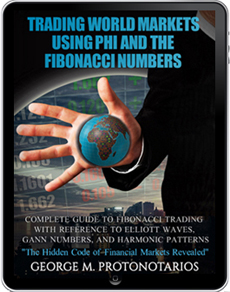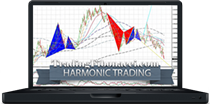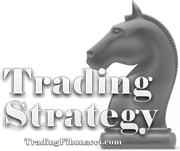Phillip Fisher once said: “The stock market is filled with individuals who know the price of everything, but the value of nothing.” This statement holds true—but is real value still what drives stock markets today? Since the introduction of the derivatives market in 1987, financial market dynamics have changed significantly. The dominance of derivatives has led markets to adopt a form of 'shorterism', focusing more on trading the news than on trading intrinsic value.
A smart investor must be both an investor and a trader. This means knowing when to trade based on news and when to trade based on real value. News trading is generally more effective in the short term, while value-based trading is more relevant for long-term investment.
Stock Indices
A stock market index is a statistical tool used to monitor the performance of a selected group of stocks that represent a particular market, sector, or investment strategy. By consolidating the performance of individual stocks into a single numerical value, an index offers a concise snapshot of market sentiment and overall economic conditions.
🔍 Core Functions of Stock Market Indices:
-
Performance Benchmarking
Serves as a standard for investors to evaluate how their portfolios perform relative to the broader market.
-
Economic Barometer
Acts as a real-time indicator of economic momentum—rising indices often reflect growing investor confidence and economic expansion.
-
Foundation for Passive Investing
Forms the basis for index-tracking investment vehicles such as exchange-traded funds (ETFs) and mutual funds.
Table: Here are the major stock indices around the globe
| Stock Index | Symbol | Country/Region | Number of Components | Primary Exchange | Market Value (2025) | Weighting Method |
|
^DJI | US | 30 | NYSE | 43819.27 | Price-Weighted |
|
^GSPC | US | 500 | NYSE/NASDAQ | 6173.07 | Market Cap |
|
^IXIC | US | ~3,000 | NASDAQ | 20273.46 | Market Cap |
|
^STOXX50E | Eurozone | 50 | Euronext | 5321.05 | Market Cap |
|
^GDAXI | Europe | 40 | Frankfurt SE | 24026.61 | Market Cap |
|
^FCHI | Europe | 40 | Euronext Paris | 7692.89 | Market Cap |
|
^FTSE | UK | 100 | London SE | 8789.79 | Market Cap |
|
^N225 | Asia | 225 | Tokyo SE | 40472 | Price-Weighted |
|
^HSI | Asia | 50–80 | Hong Kong SE | 24083 | Market Cap |
|
^AXJO | Australia | 200 | ASX | 8514.2 | Market Cap |
Stocks and Trading Strategy
The following strategy is investment-oriented and involves long-term thinking.
4 Simple Steps to Choose and Trade Stocks
Here are the four (4) steps:
Step 1: Define Your Investing Profile and Choose a Market
To define your investing profile, you must answer three key questions:
-
What is your available capital, and for how long will it remain available?
-
How much loss are you willing to tolerate?
-
What annual returns would satisfy you?
If you hold medium capital and seek high returns, you will likely opt for aggressive stocks within high-growth industries (e.g., technology stocks on Nasdaq). Conversely, if you're risk-averse, you may prefer the safety of blue-chip stocks, such as those listed on the Dow Jones Industrial Average. If trading CFDs, binary options, or other derivatives, you can adjust your risk exposure by changing the leverage level. Stop-loss orders can further limit risk, especially in derivative trading.
Step 2: Define the Master Trend
Rather than diving deep into technical analysis, here's a simple guideline:
→ When an index (e.g., Dow 30) is above its 260-day moving average, the master trend is considered bullish.
→ When an index is below its 260-day moving average, the master trend is considered bearish.
Note that some funds rely solely on moving averages to determine their trading periods. Depending on the market and your experience, more sophisticated methods can also be applied.
Step 3: Select and Compare Industries
Do not pick individual stocks without first focusing on an industry. Choose an industry by comparing it to the general index and other sectors. Emerging technologies or innovations can turn an industry into a future star—or lead to its decline. Seek out the potential stars. If uncertain, focus on technology, which often performs well during bullish markets (e.g., internet or biotech sectors).
Measuring and Comparing Industry Value
Generally, industry value can be assessed using ratios such as:
-
P/E or EV/EBITDA – These ratios measure profitability using both historical and forecast data. High-growth industries may justify high P/E ratios (e.g., P/E = 30), while static industries may not justify even P/E = 10. The P/E/G ratio (Price / Earnings / Growth) can also help combine growth and profitability.
-
Industry Performance Over the Past 52 Weeks – Compare the industry’s average return to that of the general index or other industries. For example, if the general index returned +20% and an industry returned +5%, it may be undervalued; if it returned +40%, it may be overbought.
Tip: Choose at least two different industries to diversify your portfolio.
Step 4: Select Your Stocks
Once you've selected one or more industries, it’s time to pick individual stocks. Start by focusing on market leaders—companies with the largest market share nationally or internationally. Fund managers tend to favor such companies, which is a key advantage.
Other important filters include:
-
P/E and EV/EBITDA Comparisons
-
Corporate Debt and Liquidity Comparisons
-
Past and Projected Investment Activity
-
Management’s Historical Performance
-
Stock Performance Relative to Its Industry Over a Given Period (e.g., year-to-date)
This structured, value-driven approach can help long-term investors make informed and strategic decisions when selecting stocks.
The General Trading Rule You Must Never Forget
Whether you are trading classic stocks, CFDs, or any other financial instrument, always remember: portfolio diversification is key to survival:
- Diversify across different markets, industries, companies, and currencies.
■ Trading Stocks & a Winning Strategy
G.P. for TradingFibonacci.com (c)
▶️ FIND OUT MORE AT TRADINGFIBONACCI.COM











